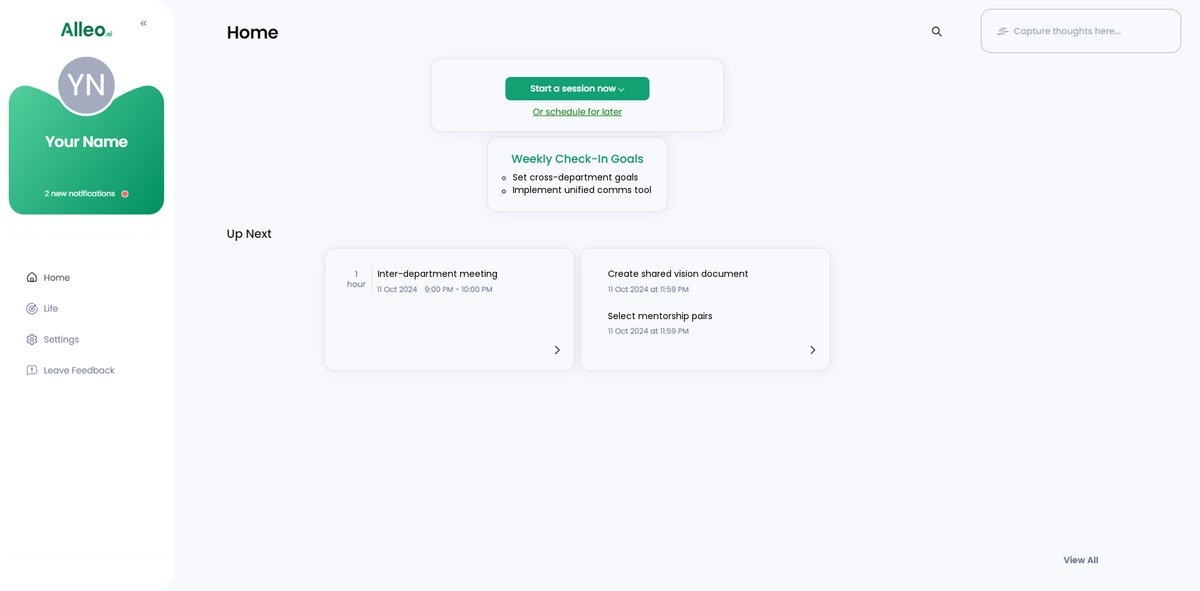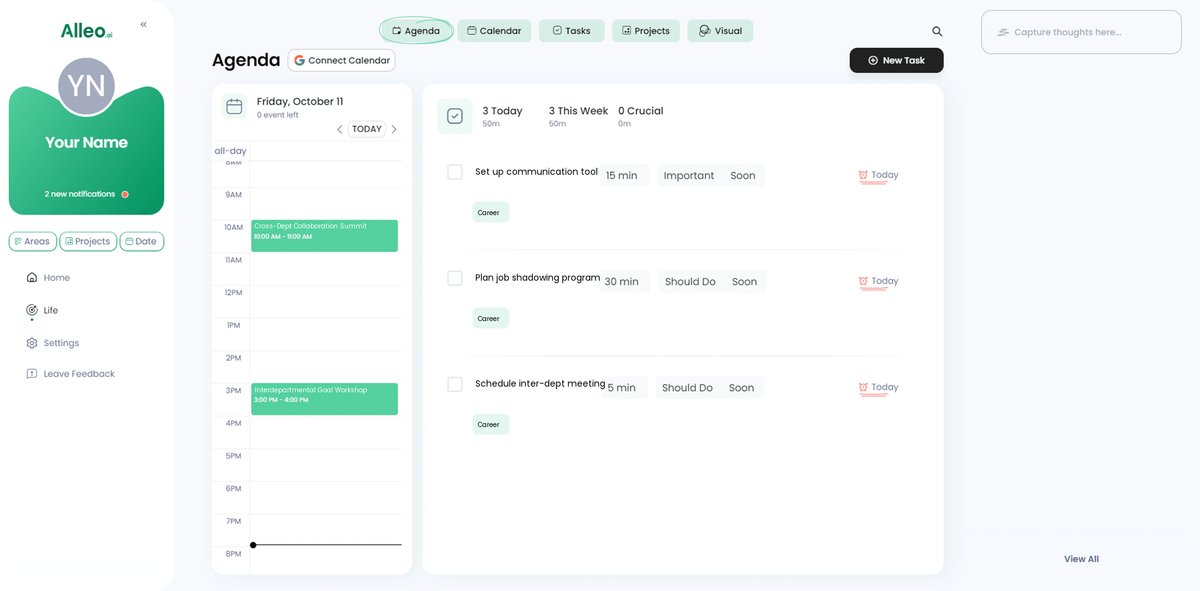The Ultimate Manager’s Guide to Enhancing Cross-Departmental Collaboration
Have you ever felt frustrated trying to improve cross-departmental collaboration strategies? Breaking down organizational silos can be challenging.
As a life coach, I’ve guided many managers through the maze of interdepartmental dynamics. My experience shows that effective cross-functional teamwork is crucial for project success and conflict resolution. Implementing management collaboration techniques can make a significant difference.
In this article, you’ll discover actionable strategies to improve cross-departmental collaboration, including setting clear goals, creating cross-functional teams, and utilizing workplace collaboration tools. We’ll also explore leadership skills for cross-team projects and effective interdepartmental meetings.
Let’s dive in and explore how to overcome cross-departmental challenges while promoting a collaborative corporate culture.

Understanding the Challenges of Cross-Departmental Collaboration
Cross-departmental collaboration often faces significant hurdles. Communication gaps, conflicting objectives, and lack of trust between departments are common challenges when trying to improve cross-departmental collaboration strategies. Overcoming cross-departmental challenges is essential for effective interdepartmental meetings and project success.
These issues can drastically impact project outcomes and team morale, highlighting the need for management collaboration techniques and workplace collaboration tools.
Several clients report frustration with unclear communication channels. In my experience, this often leads to missed deadlines and increased stress, emphasizing the importance of interdepartmental communication strategies.
Additionally, conflicting goals between departments can create tension. This misalignment not only hampers productivity but also affects overall organizational success, underlining the need for breaking down organizational silos and promoting a collaborative corporate culture.
Addressing these challenges is crucial. Without it, collaboration efforts will continue to falter, causing more harm than good. Developing leadership skills for cross-team projects and building relationships across departments are key to improve cross-departmental collaboration strategies.

Strategic Steps to Enhance Cross-Departmental Collaboration
Overcoming this challenge requires a few key steps. Here are the main areas to focus on to improve cross-departmental collaboration strategies and make progress.
- Establish clear, shared goals across departments: Align project objectives and ensure all teams are on the same page, promoting a collaborative corporate culture.
- Create cross-functional teams for key projects: Leverage diverse skills and perspectives for better outcomes, enhancing cross-functional teamwork.
- Implement regular inter-department meetings: Facilitate effective interdepartmental meetings and address challenges collectively.
- Develop a unified communication platform: Standardize workplace collaboration tools and protocols to streamline interdepartmental communication strategies.
- Encourage job shadowing between departments: Foster understanding and empathy through shared experiences, breaking down organizational silos.
- Set up a cross-departmental mentorship program: Provide guidance and support across different teams, building relationships across departments.
Let’s dive in to these strategies to improve cross-departmental collaboration!
1: Establish clear, shared goals across departments
Setting clear, shared goals across departments is essential for cohesive project execution and to improve cross-departmental collaboration strategies.
Actionable Steps:
- Facilitate a goal-setting workshop with department representatives to promote cross-functional teamwork. Ensure alignment on objectives and roles.
- Create a shared vision document accessible to all team members, focusing on interdepartmental communication strategies. Regularly update it during project milestones.
- Implement a feedback loop to gather input on goal progress and overcome cross-departmental challenges. Conduct monthly surveys to assess alignment.
Explanation: Establishing clear goals helps teams stay focused and aligned, which is crucial for management collaboration techniques.
According to Saviom, shared goals enhance collaboration and trust, leading to better project outcomes and breaking down organizational silos.
Aligning on objectives reduces misunderstandings and ensures everyone is working towards the same targets, promoting a collaborative corporate culture.
These steps lay a strong foundation for effective cross-departmental collaboration and building relationships across departments.

2: Create cross-functional teams for key projects
Creating cross-functional teams for key projects is essential for leveraging diverse skills and achieving better outcomes, which is a crucial step to improve cross-departmental collaboration strategies.
Actionable Steps:
- Identify key projects that would benefit from cross-functional teams: Select members from various departments with diverse skills and perspectives to enhance interdepartmental communication strategies.
- Establish clear team roles and responsibilities: Define expectations for each team member to prevent overlap and confusion, promoting effective management collaboration techniques.
- Set up regular team-building activities: Organize offsite workshops or social events to foster relationships and build trust, breaking down organizational silos.
Explanation: Creating cross-functional teams enhances collaboration by bringing different perspectives together, which is key to improving cross-departmental collaboration strategies.
According to Adam.ai, effective cross-team collaboration ensures alignment with project goals, avoids misunderstandings, and accelerates problem-solving.
These steps help create a cohesive team dynamic, leading to more innovative and efficient project execution while promoting a collaborative corporate culture.
Building these teams is a step towards smoother cross-departmental collaboration and overall project success, addressing the need to improve cross-departmental collaboration strategies.

3: Implement regular inter-department meetings
Regular inter-department meetings are vital for fostering communication and collaboration, helping to improve cross-departmental collaboration strategies.
Actionable Steps:
- Schedule bi-weekly inter-departmental meetings: Rotate the meeting leader role to give everyone a chance to contribute and enhance cross-functional teamwork.
- Introduce a standardized meeting agenda: Include sections for updates, problem-solving, and future planning to support effective interdepartmental meetings.
- Use collaborative tools to document meeting outcomes: Share minutes and action items with all participants to ensure accountability and improve workplace collaboration tools usage.
Explanation: Regular meetings keep everyone aligned and help address cross-departmental challenges collectively.
According to Grammarly, standardized communication tools break down organizational silos and enhance collaboration.
These steps ensure consistent interdepartmental communication strategies and foster a collaborative corporate culture.
Next, let’s explore the benefits of developing a unified communication platform to further improve cross-departmental collaboration strategies.

4: Develop a unified communication platform
Developing a unified communication platform is essential for seamless interactions between departments and can significantly improve cross-departmental collaboration strategies.
Actionable Steps:
- Select a suitable communication tool: Evaluate workplace collaboration tools like Slack or Microsoft Teams to meet departmental needs. Ensure the platform integrates well with existing tools and supports cross-functional teamwork.
- Standardize communication protocols: Create guidelines for message formatting, response times, and escalation procedures. Ensure everyone is trained and comfortable using the platform to enhance interdepartmental communication strategies.
- Monitor and evaluate effectiveness: Gather feedback from users to identify areas for improvement in management collaboration techniques. Regularly update the tool and protocols based on user input.
Key benefits of a unified communication platform include:
- Improved information flow across departments, breaking down organizational silos
- Reduced miscommunication and errors in cross-team projects
- Increased efficiency in project collaboration and interdepartmental meetings
Explanation: Implementing a unified communication platform enhances clarity and reduces miscommunication, crucial for improving cross-departmental collaboration strategies.
According to Grammarly, standardized communication tools break down silos and boost collaboration. Consistent protocols ensure everyone is on the same page, fostering a more cooperative work environment and building relationships across departments.
This approach sets the stage for more effective cross-departmental collaboration and helps in overcoming cross-departmental challenges.

5: Encourage job shadowing between departments
Encouraging job shadowing between departments is vital for fostering mutual understanding and empathy, serving as an effective strategy to improve cross-departmental collaboration.
Actionable Steps:
- Develop a job shadowing program: Identify key roles and departments for shadowing opportunities. Pair employees based on their interests and career goals to enhance cross-functional teamwork.
- Set clear objectives for job shadowing experiences: Outline what participants should learn and achieve. Provide a checklist or guide to help them stay focused on improving interdepartmental communication strategies.
- Debrief and share insights from job shadowing experiences: Conduct follow-up meetings to discuss what was learned. Encourage participants to share their experiences with their teams, promoting workplace collaboration tools and techniques.
Explanation: Job shadowing helps employees gain insights into other departments’ workflows and challenges, promoting better collaboration and breaking down organizational silos.
According to Saviom, understanding interdependencies between departments can significantly improve teamwork and project outcomes. This approach builds stronger relationships and contributes to a cohesive organizational culture, enhancing management collaboration techniques.
Job shadowing can lead to several positive outcomes:
- Enhanced empathy between departments
- Improved problem-solving across teams
- Increased employee engagement and satisfaction
This initiative paves the way for more empathetic and effective cross-departmental interactions, helping to overcome cross-departmental challenges and promote a collaborative corporate culture.

6: Set up a cross-departmental mentorship program
Setting up a cross-departmental mentorship program can foster knowledge sharing and strengthen interdepartmental relationships, effectively improving cross-departmental collaboration strategies.
Actionable Steps:
- Identify potential mentors and mentees: Match pairs based on skills, experience, and career aspirations. Ensure mentors are equipped to provide effective guidance for cross-functional teamwork.
- Establish a structured mentorship framework: Define goals, meeting schedules, and expected outcomes. Provide resources and support to facilitate productive mentorship relationships and enhance interdepartmental communication strategies.
- Evaluate and refine the program: Gather feedback from participants to assess the program’s impact on management collaboration techniques. Make adjustments to improve the experience for future pairs.
Key elements of a successful cross-departmental mentorship program:
- Clear goals and expectations for both mentors and mentees
- Regular check-ins and progress evaluations to overcome cross-departmental challenges
- Opportunities for reverse mentoring to promote mutual learning and build relationships across departments
Explanation: A mentorship program helps bridge gaps between departments, promoting collaboration and shared learning. According to Saviom, understanding interdependencies between departments significantly enhances teamwork and project outcomes.
These steps build stronger relationships and contribute to a cohesive organizational culture, breaking down organizational silos.
This initiative paves the way for more empathetic and effective cross-departmental interactions, setting the stage for continuous improvement in workplace collaboration tools and leadership skills for cross-team projects.

Partner with Alleo to Enhance Your Cross-Departmental Collaboration
We’ve explored the challenges of improving cross-departmental collaboration strategies, and ways to tackle them. But did you know you can work directly with Alleo to make this journey easier and faster for breaking down organizational silos?
Setting up an account with Alleo is simple. Create a personalized plan tailored to your collaboration needs, focusing on cross-functional teamwork and interdepartmental communication strategies.
Our AI coach provides full coaching sessions, just like a human coach. They follow up on progress, handle changes, and keep you accountable via text and push notifications, helping you develop leadership skills for cross-team projects.
Ready to get started for free and improve cross-departmental collaboration strategies? Let me show you how!
Step 1: Log In or Create Your Account
To begin your cross-departmental collaboration journey with Alleo, simply Log in to your account or create a new one to access our AI coach and start improving your team’s collaboration skills.

Step 2: Choose Your Focus Area
Select “Setting and achieving personal or professional goals” to align your efforts with the cross-departmental collaboration strategies discussed in the article, helping you tackle workplace challenges and improve team dynamics effectively.

Step 3: Select “Career” as Your Focus Area
Choose “Career” as your focus area to directly address cross-departmental collaboration challenges, aligning with the strategies discussed in the article for improving workplace dynamics and project success.

Step 4: Starting a Coaching Session
To begin your journey towards improved cross-departmental collaboration, initiate your first coaching session with Alleo’s AI coach by scheduling an intake session, where you’ll discuss your goals and create a personalized plan for enhancing teamwork across departments.

Step 5: Viewing and managing goals after the session
After your coaching session, check the Alleo app’s home page to view and manage the cross-departmental collaboration goals you discussed, allowing you to track progress and stay accountable.

Step 6: Adding events to your calendar or app
Track your progress in improving cross-departmental collaboration by adding key milestones and meetings to your calendar or app, allowing you to easily monitor deadlines and stay accountable using the AI coach’s calendar and task features.

Bringing It All Together
You’ve now got a toolkit to tackle cross-departmental collaboration challenges head-on and improve cross-departmental collaboration strategies.
Remember, setting clear goals and fostering trust across teams is vital for effective interdepartmental meetings. Regular meetings and a unified communication platform can make a big difference in promoting cross-functional teamwork.
Job shadowing and mentorship programs offer deeper understanding and stronger relationships, helping in breaking down organizational silos.
By applying these management collaboration techniques, you can transform how your departments work together and overcome cross-departmental challenges.
And don’t forget, Alleo is here to support you every step of the way. Our AI coach is ready to help you improve cross-departmental collaboration strategies and achieve your goals using workplace collaboration tools.
Ready to take the next step in building relationships across departments? Start your journey with Alleo today to enhance your leadership skills for cross-team projects!